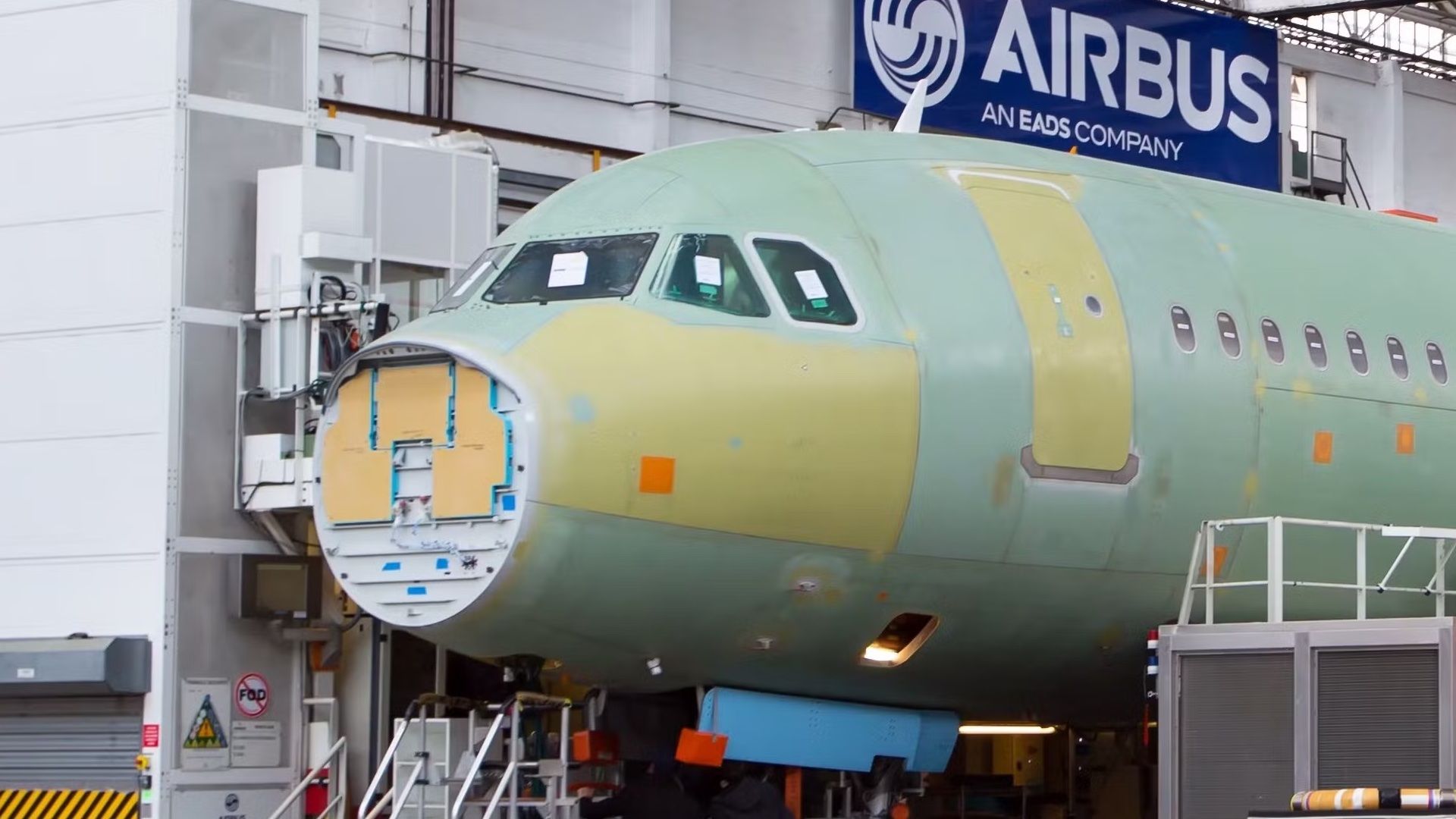Business
Airbus Expands Operations with Second Assembly Line in Tianjin

Airbus has inaugurated a second final assembly line (FAL) for its A320-family aircraft in Tianjin, China, significantly enhancing its production capabilities. This move comes shortly after the company launched an additional assembly line in Mobile, Alabama, USA. By 2027, Airbus aims to increase its output of the A320neo family to a remarkable 75 jets per month, a strategic decision influenced by the growing demand in the Asian market.
The opening ceremony in Tianjin was notably understated, lacking participation from Western media. This reflects Airbus’s careful navigation of the ongoing trade tensions between the United States and China. The company must balance its reliance on US suppliers while catering to a customer base that is increasingly centered in China. Currently, China stands as Airbus’s largest individual market, with over 2,200 aircraft in service and a significant industrial presence in the region.
Strategic Expansion and Market Dynamics
The establishment of a second assembly line in Tianjin allows Airbus to enhance its narrowbody production capacity. As the company increases its final assembly line capacity near critical markets, it gains better control over delivery slots where demand is strongest, particularly in North America and China. This strategy not only mitigates geopolitical risks but also bolsters Airbus’s negotiating power with airlines and suppliers.
In addition to its production expansion, Airbus is reportedly negotiating a substantial order with Chinese airlines, anticipated to be around 500 jets. While only a portion of this order is expected to be finalized soon, it underscores the strengthening ties between the European manufacturer and the Asian aviation market.
Financial Considerations and Future Outlook
From a financial perspective, the immediate effects of this expansion are mixed. Analysts point out that while higher learning-curve inefficiencies and synchronization costs may pressure Airbus’s margins, the anticipated increase in A320neo deliveries will ultimately translate into revenue growth. As production stabilizes, the improvement in fixed-cost absorption will ease overall unit costs, paving the way for a healthier cash flow scenario beyond the initial ramp-up phase.
Airbus’s positioning near its customers reduces logistical challenges, allowing the company to maintain pricing discipline in a competitive market. The A320neo model is increasingly recognized as a benchmark for operational efficiency and passenger comfort, a crucial selling point as airlines prioritize customer experience in their fleet choices.
Looking ahead, the challenge for Airbus lies in scaling up production to meet this visible demand. The slow-moving nature of supply chains within the industrial sector presents hurdles, yet the establishment of the new assembly line in Tianjin highlights Airbus’s commitment to the East Asian market. This expansion aims to secure additional orders for its leading narrowbody aircraft, thereby reinforcing its market position and addressing the growing needs of its clientele.
In conclusion, Airbus’s strategic decisions to expand its presence in China not only enhance its production capabilities but also strengthen its ties within a region poised for significant growth in the aviation sector. As the company navigates the complexities of international trade, its focus on customer proximity and operational efficiency will be crucial in driving future success.
-

 Entertainment3 months ago
Entertainment3 months agoAnn Ming Reflects on ITV’s ‘I Fought the Law’ Drama
-

 Entertainment4 months ago
Entertainment4 months agoKate Garraway Sells £2 Million Home Amid Financial Struggles
-

 Health3 months ago
Health3 months agoKatie Price Faces New Health Concerns After Cancer Symptoms Resurface
-

 Entertainment3 months ago
Entertainment3 months agoCoronation Street’s Carl Webster Faces Trouble with New Affairs
-

 Entertainment3 months ago
Entertainment3 months agoWhere is Tinder Swindler Simon Leviev? Latest Updates Revealed
-

 World2 weeks ago
World2 weeks agoBailey Announces Heartbreaking Split from Rebecca After Reunion
-

 Entertainment2 weeks ago
Entertainment2 weeks agoCoronation Street Fans React as Todd Faces Heartbreaking Choice
-

 Entertainment4 months ago
Entertainment4 months agoMarkiplier Addresses AI Controversy During Livestream Response
-

 Science1 month ago
Science1 month agoBrian Cox Addresses Claims of Alien Probe in 3I/ATLAS Discovery
-

 Health5 months ago
Health5 months agoCarol Vorderman Reflects on Health Scare and Family Support
-

 Entertainment4 months ago
Entertainment4 months agoKim Cattrall Posts Cryptic Message After HBO’s Sequel Cancellation
-

 Entertainment3 months ago
Entertainment3 months agoOlivia Attwood Opens Up About Fallout with Former Best Friend



















